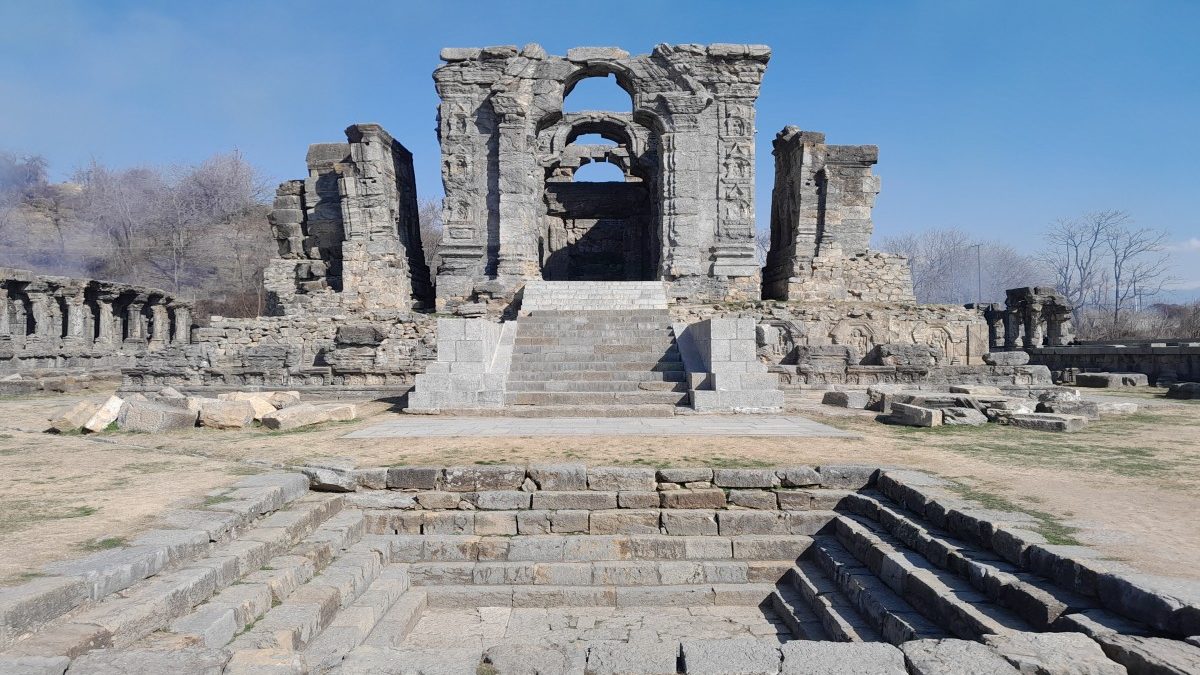Sometimes the most innocuous government documents hold great promise. One such document – an internal communication from one department of the Government of the Union Territory (UT) of Jammu and Kashmir to other departments recently appeared on the internet and sparked off an enthusiastic discussion.
The document in question, dated March 27, 2024, was signed by an undersecretary in the UT government and was marked to seven officers. It called for a meeting to discuss the ‘protection, conservation and restoration’ of the iconic Sun temple at Martand. It also mentioned a plan to install a statue of the Emperor Lalitaditya at the same place.
Coming more than three decades after the Kashmiri Pandit community was ethnically cleansed from the Valley and centuries after the temple itself was devastated by a bigoted ruler, it is perhaps natural that this document should spark such interest, especially among those inclined to the political right wing. After all, the degree of apathy shown towards the plight of the Kashmiri Pandits is exceeded only by the greater neglect of Kashmir’s Hindu heritage.
Martand’s Sun temple is one of the high points of that heritage. The temple was built in the 8th century CE by Lalitaditya Muktapida, foremost ruler of the Karkota dynasty that dominated not just Kashmir in that era but a large part of north India as well. The temple was built atop a plateau from which, it was said, that one could view the entire Kashmir Valley. Allowing for exaggeration, the location as it appears even after twelve centuries, is magnificent.
The temple is built in a courtyard style, in the middle of which stands a central shrine. It is surrounded by a pillared corridor forming a continuous porch, called a peristyle design. It is said that as many as eighty-four smaller shrines once stood throughout this corridor. An illustration made in the late 19th century by a visiting European, based on historic descriptions, shows the Sun temple as standing in the middle of a water body. As per some accounts, water from the Lidder River was brought in through a canal.
Impact Shorts
More ShortsAt its peak, the place was a destination of great importance to pilgrims. Its darkest hour came during the reign of Sultan Sikandar Shah Miri (reign 1389-1413 CE) – also called Sikandar Butshikan (meaning ‘iconoclast’) who razed the shrine. Periodic earthquake tremors in subsequent years compounded the damage. What a visitor sees today is a ruin, with lost idols and tumbling columns. A few icons here and there give a glimpse of what the place was.
The 9th century CE Avantiswami temple would have rivalled the Sun temple in size and elegance when both were at their prime. Sadly, today it is in a similar, ruined state. Just off the highway, between Pulwama and Khrew, lies Loduv. Here, in the middle of a water body stands an ancient Shiva temple. Dated to the 8th century CE, it is considered the oldest extant stone shrine in the Valley.
A small causeway links the shrine to the edge of the water body. The central structure is devoid of any embellishment on its outer walls. At the edges, sticking out of the water body are broken fragments of icons which would have once been part of the main structure itself. The entrance gateway to the structure is a horseshoe shaped arch, a feature seen in multiple shrines in the Valley. But the most astonishing aspect of this temple is that the water body it stands in is fed by a natural spring, one believed to have sulphur content. In its heyday, I imagine people coming here for the healing effects of the water and taking a dip with the temple bells pealing in the background.
At the time of my visit, the place was silent. A solitary trooper at a nearby CRPF post kept a watchful eye around. He mentioned that in the duration that his unit had been deployed there, he had never seen a worshipper at the site—the direct result of demographic change forced in the Valley in 1990.
This author received even more evidence of the demographic disconnect at a temple site in Kakpora, closer to Srinagar. Unlike the temples mentioned earlier, the shrine here has been entirely reduced to heaps of stones. The site is protected by a fence and marked by a board. But not a soul in the village thinks of it as a temple. To the locals, it is just a patch of land. My walking through the place gradually drew a small audience. Was the sight of a visitor to the long-destroyed temple in their vicinity so alien to the residents that they were genuinely filled with curiosity?
Over the last three decades, two generations have grown to adulthood in an environment where there is no religious diversity – an environment where the Sun temple at Martand is horrendously labelled ‘Shaitan ki gufa’ – cave of the devil - a scenario where this author found three local boys smoking while sitting at the door of the ancient cave shrine at Bumzuva.
Apart from those mentioned here, the Kashmir Valley has dozens of shrines lying in different stages of ruin and disrepair. One hopes that the government document mentioning restoration of the Sun temple is indeed correct and that the government is indeed able to implement the plan, overcoming the opposition that is inevitable from those with vested interests. For the Valley to have a bright future, it is critical to revive and rebuild the icons of its ancient past and give the displaced ones a reason to celebrate their ancestral homeland once again.
The author is a heritage explorer by inclination with a penchant for seeking obscure sites. A brand consultant by profession, he tweets @HiddenHeritage. Views expressed in the above piece are personal and solely that of the author. They do not necessarily reflect Firstpost’s views.


)

)
)
)
)
)
)
)
)



